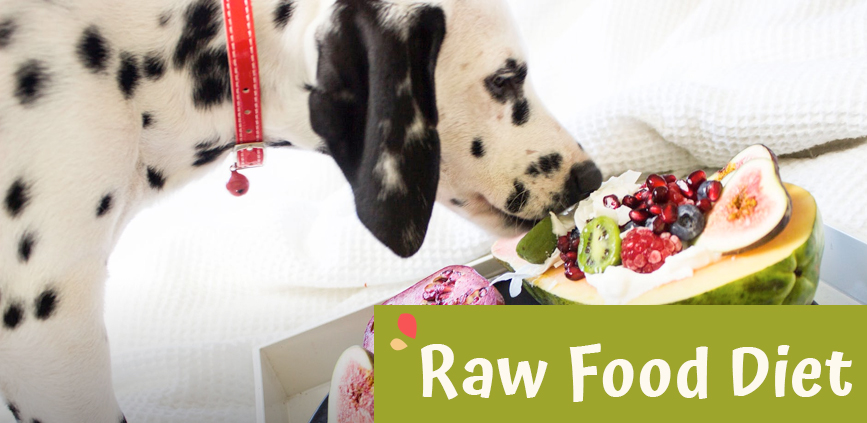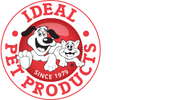Raw Dog Food is All the Rage: Should You Make the Switch?

Is kibble not all it’s cracked up to be?
According to the internet and a whole bunch of fresh dog food startups, a raw or gently cooked meal might actually be healthier for your dog. While racing dogs like Greyhounds and sled dogs have always eaten raw diets, the idea of all dogs ditching dry food is a recent development first proposed by Australian veterinarian Ian Billinghurst in 1993. Dr. Billinghurst suggested the “BARF” diet, a rather unappetizing acronym that stands for Bones and Raw Food or Biologically Appropriate Raw Food, and it’s gained popularity in recent years as humans transition their own diets to include more organic and raw food.
What is a raw food diet?
A raw food diet typically consists of organ/muscle meat, fruits, vegetables, and whole grains. The official guidelines for the “BARF” diet are 70% muscle meat, 10% raw edible bone, 5% liver, 5% other secreting organ, and 10% vegetables and fruit. Commercially processed raw food diets are often frozen or freeze-dried and combination diets use blends of grains, vegetables, and vitamins that the owner mixes with raw meat purchased at the grocery store.
Signs your dog’s diet isn’t working
“If it ain’t broke, don’t fix it” applies here. If your dog is happy, healthy, and eating voraciously, there’s no need to change her diet. However, if you’ve noticed any of the following issues (or your dog’s had a recurring issue your vet can’t diagnose), you may want to try a different diet:
- Weight gain. Maybe you’ve been spending a bit too much time cuddling on the couch in lieu of walking lately, but weight gain can also be a sign that your dog’s having trouble processing his food.
- Scratching. Dogs scratch a lot by nature — you would too, if you were covered in fluff! — but a constant level of scratching can mean your dog’s suffering from an allergy.
- Diarrhea or constipation. If potty time has become problematic for your pup, that’s a surefire sign he and his food aren’t getting along.
- Gas. The occasional room-clearing puppy fart is nothing to worry about (in the long term, that is), but constant gas means something’s amiss.
- Low energy. A tired-after-a-jog dog is a happy dog, but a tired-all-the-time dog is a dog with a problem — and that problem might just be a lack of vitamins and nutrients.
- Decreased appetite. Anyone who knows dogs knows this is a bad sign. If your dog isn’t scarfing down his food within minutes, that means he doesn’t like it — and that’s reason enough to try something new.
Benefits of raw food
Proponents of raw dog food tout this diet’s many positive effects, including:
- Cleaner teeth
- Fresher breath
- A shinier coat
- More energy
- Healthier skin
- Smaller stools
Sounds great, right? However, people who advocate against raw dog food argue that shinier coats are simply the result of the high fat content in raw meats (which can be achieved via high-fat commercial foods without the risks of an unbalanced diet) and that too much fat without enough protein can cause mild anemia.
Risks of raw food
Many mainstream veterinarians (and the FDA) believe the risks outweigh the benefits.
- Bacteria in raw meat can present threats to dog and human health alike
- If the raw food diet is unbalanced, it may damage your dog’s health over time
- If the diet includes whole bones, these can potentially cause choking, broken teeth or internal punctures
If you do decide to try the raw food diet despite these risks, do your research first — and make the decision based on your individual dog’s needs.
Is raw food right for your dog?
- Activity level. Working dogs and service dogs have different caloric requirements than household pets. For instance, the average sled dog may eat between 3 and 5 pounds of raw meat per day — but that’s when they’re running at maximum capacity. (According to the Wall Street Journal, a 50 lb. dog will burn 10,000 calories a day for up to two weeks during the Iditarod.)
- Health. A balanced diet is critical for your dog’s health. If your dog has any specific dietary requirements or nutritional deficiencies, you should stick with the food your vet recommends. Even vets who recommend the raw food diet agree it’s not appropriate for dogs with late-stage kidney or severe liver failure.
- Age and size. Nutritional requirements differ between puppies and adults, large breed and small breed dogs. Check out this chart from DarwinsPet.com for raw feeding suggestions for puppies!
- Food allergies. Some dogs are allergic to specific proteins or ingredients such as eggs, corn, wheat, soy, or milk, which may make a balanced raw diet unattainable.
- Your lifestyle. How much time do you have available to spend cooking and shopping for your dog? If you’re considering preparing your dog’s food yourself, consider your schedule before you commit.
In the end, deciding which type of food to feed your dog is a decision you have to make based on your dog’s dietary requirements and preferences — and your own lifestyle and budget. And remember: whether you choose dry or raw food, a balanced diet, regular exercise and lots of love will keep your pup happy for many years to come!

